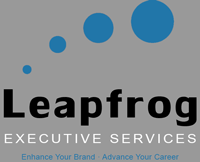Decisions, Decisions, Decisions…
Category : 2019
“The difficulty lies not so much in developing new ideas as in escaping from old ones.” — (British Economist John Maynard Keynes)
Brands are born, grow, catapult to the top of a market, and become footnotes on the pages of a B-school textbook because of one thing: Decisions.
Launching in 1994, the hobby of two Stanford graduate students quickly grew into the $125 billion internet giant Yahoo by birthing some of the first platforms for mail, directories, cloud storage, on-line broadcasting, and social networking. Four years later, two other Stanford students offered Yahoo a license to a newly-developed search technology for $1 million. Yahoo president David Filo encouraged Sergey Brin and Larry Paige to launch their own search site which they did under the name BackRub, changing the name a year later to Google.
In 2002 Yahoo tried to buy Google for $3 billion and was rejected. In 2008, Microsoft offered $44.6 billion for Yahoo-and was refused. After a rollercoaster of change, Yahoo sold to Verizon for $4.8 billion. Google has grown to a value of $167 billion.
Yahoo had a first-to-market advantage, leading technologies, and the capital to leverage all the dot-com revolution had to offer. But like dozens of other could-have-been tech companies, and once-were brands, Yahoo lacked a clear vision, resulting in a series of decisions that kept the company from embracing new ideas because it was held captive by what it knew.
Whether the decisions are big, small, intentional, or unconscious, how are your choices impacting your personal brand? If people working closest to you were interviewed, how would they rate your–
- Differentiation – How well your expertise and contributions separate you from your peers.
- Relevance – How much what you do meets a relevant business need through quantifiable results.
- Knowledge – How clear your contribution message is known and understood by the people who need it.
- Esteem – How highly the people you engage with every day (your customers) value/like your brand.
The ten-year CEO Genome study explored 17,000 c-suite assessments and interviewed 2,000 CEOs concluding that high-performing CEOs (those with strong brands) aren’t distinguished by consistently making stellar decisions as much as they differentiate themselves by being decisive. Even with ambiguity and incomplete information, those considered to be decisive were 12 times more likely to be high-performing. William James was right when he said, “No decision is, in itself, a decision.” Brand leaders make bold decisions-even at the risk of those decisions not always being the “right” decision.
Here are five ways to help you strengthen your brand through faster and better decisions:
- Frame the problem to define the decision.
Often decisions are difficult because the problem is unclear. Define the problem and data becomes your ally. Cassie Kozyrkov, the chief decision scientist at Google notes, “The key to decision-making is framing the decision context before you seek data . . . If you’re undisciplined in your attempts to use data for decision-making, your approach is susceptive to cognitive bias.”
- Avoid categorical thinking.
NBA coaches are 17% more likely to change a starting lineup following a close loss than they are following a close win – even if the point variances are the same. When we fail to think of wins on a continuum, a loss is perceived as a greater qualitative difference than a win. In the September-October issue of Harvard Business Review, Bart de Langhe and Philip Fernbach point out, “Categorical thinking can be dangerous in four important ways. It can lead you to compress the members of a category, treating them as if they were more alike than they are; amplify differences between members of different categories; discriminate, favoring certain categories over others; and fossilize, treating the categorical structure you’ve imposed as if it were static.” (HBR Sept Oct 2019).
- Pursue diverse points of view.
Confirmation bias leads us to draw conclusions from statistics that support an existing belief or preconception. Harvard Law Professor Cass Sunstein calls it the information cocoon … reading things that fortify opinions isolating ourselves from diverse ideas and information. A decisive executive surrounds herself with people who will challenge her thinking and offer a dissenting judgment.
- Recognize the difference between risk and uncertainty.
From choosing a school, to accepting a job, to pursuing a promotion, to hiring a replacement, all decisions require managing the tensions of risk and uncertainty. Risk is the possibility of loss or injury, generally expressed in the quantifiable terms used by risk managers, actuaries, and loss assessments. Uncertainty is not being completely confident or sure of something. Risk management is your insurance company raising your rate 200% when your teenage child gets a driver’s license. Uncertainty is the feeling you have the first time you let your child take the car alone. Successful leaders manage risks while avoiding the trap of trying to eliminate all the uncertainty in a decision.
- Minimize the IKEA effect.
Like the budget-conscious people that flood the floors of the well-known home furnishings store, beware of the tendency to place a disproportionately high value on something you had a hand in creating. For a leader, that means not over-valuing your career and what you’re worth because you’ve invested your life in it. Brand value is determined by contributions, not self-assessment.
Theodore Roosevelt said, “In any moment of decision, the best thing you can do is the right thing, the next best thing is the wrong thing, and the worst thing is to do nothing.” The records of great companies and the leaders that build them are constructed on the foundation of well-framed, well-timed, and more often than not, right decisions.
